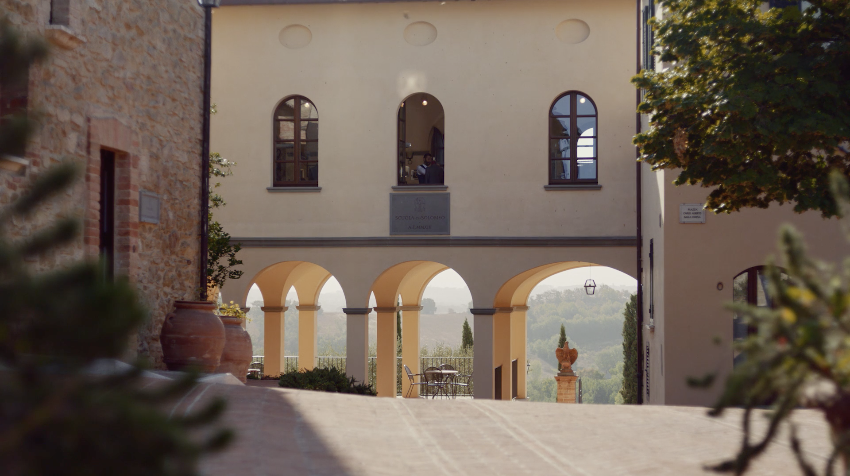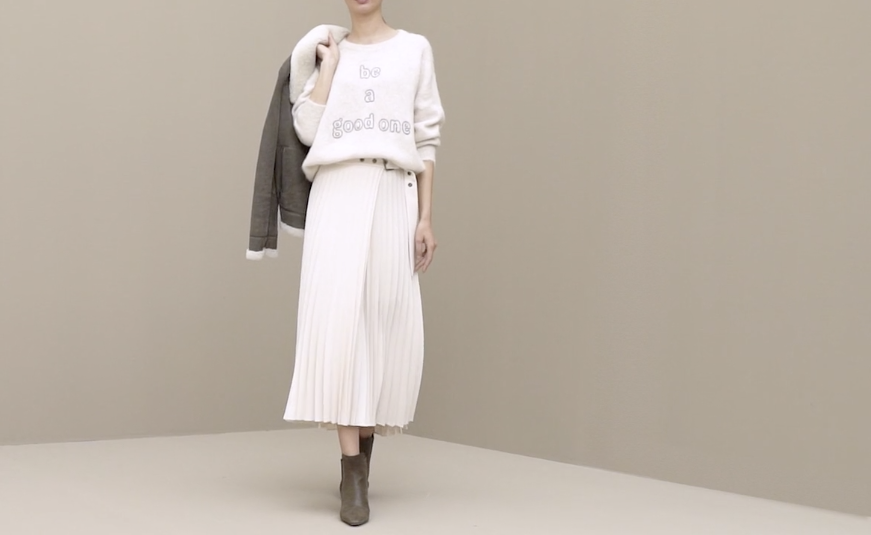
Empire in a hamlet: Brunello Cucinelli
I keep hearing interesting things about the cashmere designer and “humanistic capitalist” Brunello Cucinelli, most recently that he hosted Jeff Bezos, Reid Hoffman, and other, as the Italian press headlined, “Big della Silicon Valley” in the hamlet which is the headquarters of his 500 million euro brand. The subject was “…our respect, safeguard and promotion of what has always been seen as the deepest treasure of people, the highest evidence of the original nobility of man, the utmost expression of freedom and moral supremacy: the soul.” Equally curious and skeptical (whenever billionaires start making plans for the human soul), I wanted to learn more.
The Cucinelli lore is that Brunello grew up deep in the Umbrian countryside, near Perugia, in a house without electricity or running water. After the family moved to the urban north of Italy so that his father could work in a cement factory the family happiness plummeted, and Brunello saw his father return from work often humiliated and morally defeated. After dropping out of engineering school to study philosophy on his own he pledged to create work for people that provided moral and economic dignity. “I have listened to the wise and moving words of Saint Francis, Saint Benedict, Kant, Marcus Aurelius, Socrates, Seneca, and I have realised that economic value is nothing without the human component and that the former cannot survive without the latter.” In 1978 he started out with a $500 loan and dyed some cashmere sweaters a range of bright colors (previously cashmere was available mostly in neutrals). They were a huge success.
The company grew from there and in 1982 he married his highschool sweetheart, Federica, and they moved to the hamlet where she grew up, Solomeo. In 1985 they made the town the headquarters of the growing business and purchased the ruins of a 14th-century castle to refurbish. As the company continued to grow they invested more and more into the community and the workers, paying 20% more than the average wage, ending the work day at 5:30 and discouraging working online after that time, and closing everything for a 90 minute, highly-subsidized lunch. Pretty interesting considering fashion is one of the most competitive and “always-on” industries around. “People need their rest,” Cucinelli says. “If I make you overwork, I have stolen your soul.”
Cucinelli has restored the hamlet, including the church and the theater, and founded the Solomeo School of Arts and Crafts (inspired by William Morris and John Ruskin) to teach and celebrate fine craftsmanship. Recently they cleared away some ugly industrial buildings at the foot of the hill and built a light-filled new factory, youth center, sports grounds, and parks. It’s a great model that he can do good and it only adds more value to his brand.

photo from brunellocucinelli.com
I heard that at one point he wanted to increase the size of his business substantially and looked at what it would take to expand while controlling quality of product (and life)—how to resource more cashmere, where to get it dyed, how to find enough craftsmen to hire and train to make the garments, where to build more factories—and decided that instead of scaling volume he would raise prices significantly, which has been successful because of the huge popularity of the brand.
I went to Solomeo for the morning and my feelings were mixed. I was so excited to see how he’d restored the village, but I found the restoration to be a bit cold and not preserving the organic serendipity that makes old buildings so human and interesting. I showed Donella and John some photos over lunch and Donella said “It looks like it’s a new ‘Tuscan village’ gated community in China.” Hmmm. It’s fair enough that the company dominates the hamlet—it does employ 1,600 locals—but I wasn’t expecting it to feel quite so antiseptic. However it is wonderful to save a tiny hamlet that would probably otherwise be largely in ruin.

photo from brunellocucinelli.com
On the other hand the clothes are incredible. I loved everything in the store but find it hard to imagine paying $3,000 for a simple cashmere sweater, over $8,000 for a coat, or $9,000 shearling jacket, even if I could.
I want to love everything he is doing—I’ve often wondered how to help foster thriving businesses without wrecking everything good about Italy—but there is something holding me back from being 100% a fan girl. Maybe it’s that what I love most about Italy is the inherent messiness, directness, lack of branding and facade. Along with the sad realization that those traits don’t usually drive success and growth. Wondering if there are ways for villages to prosper, kids to have career options, family businesses to thrive while not killing what makes people happier, more present, and more “real” than I’ve seen anywhere else. It was fascinating to see one model for a solution.
(top image from corcianonline.it)






No Comments